After Air India’s posh party at a Delhi hotel to celebrate its rebranding a couple of months ago, all eyes were on Air India Express to tell us more about what lies in store for them. Air India Express is a significant story to be told because it is non-descript, keeps its heads down and operates a small but profitable operation in the Middle – East and Southeast Asia from South India, now coming of age and growing domestically in the coming days.
In an age where airlines are falling like nine pins, Air India Express will attempt to counter IndiGo in the times ahead as they replace Air India in operations to many tier 2 and tier 3 cities in India.
While I had never flown the erstwhile Air India Express, I’d flown AirAsia India a few times before it changed names and became AIX Connect, on its way to becoming a part of Air India Express. I’ve always appreciated the brilliant ideas they brought forward, such as the GourmAir dining menu and the youthful appeal of the airline.
Air India Express’ went big on opening night.
A few days ago, an unassuming email landed in my inbox, inviting me to the Air India Express reveal in Mumbai held last night. It took me less than two minutes to RSVP my presence for the event. I immediately got a “boarding pass” sent to my email and Whatsapp, signifying the technology interventions the airline had already imagined for the event. Cue to the big day, yesterday, when I arrived at the venue.
Unlike Air India’s “reveal” at a posh hotel, Air India Express was going to be done at Air India’s hangars because they had more to show than just branding changes; they also had an aircraft to showcase in the new colours (something that Air India got criticised for, just showing a livery render). The venue was decked up accordingly. On arrival at the hangar, a car drove you to the gate of the event, which was still a significant drive inside the premises.
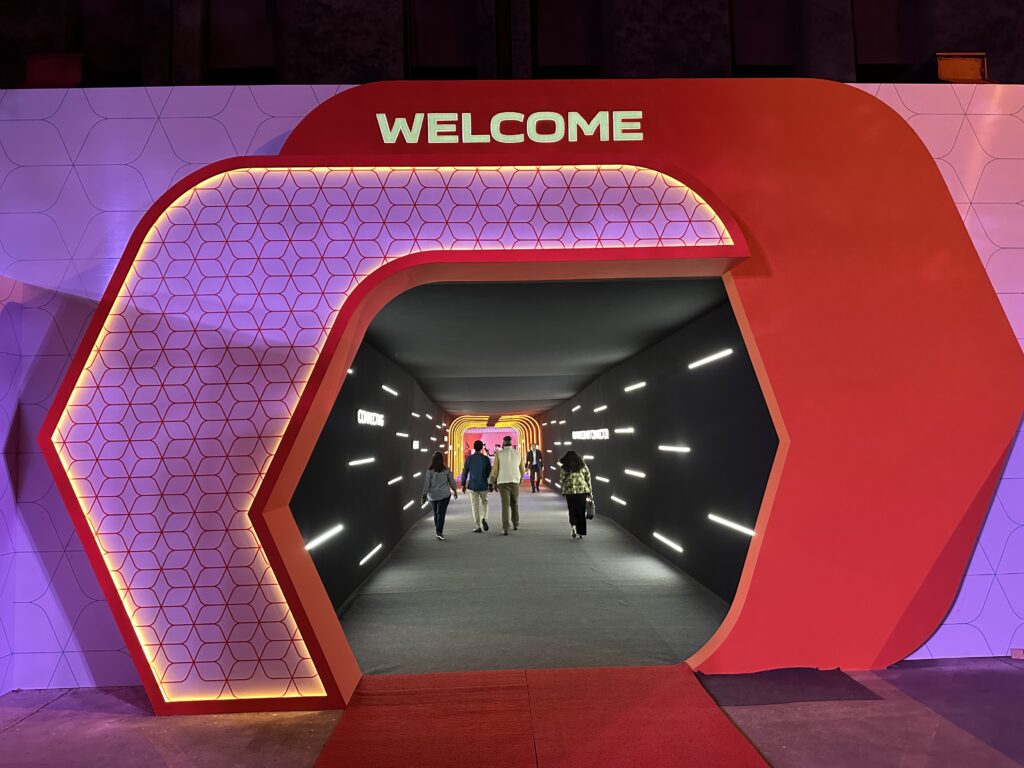
There, you walked through a tunnel with hints about the new AIX for those who don’t know, New India’s Smart Connector.
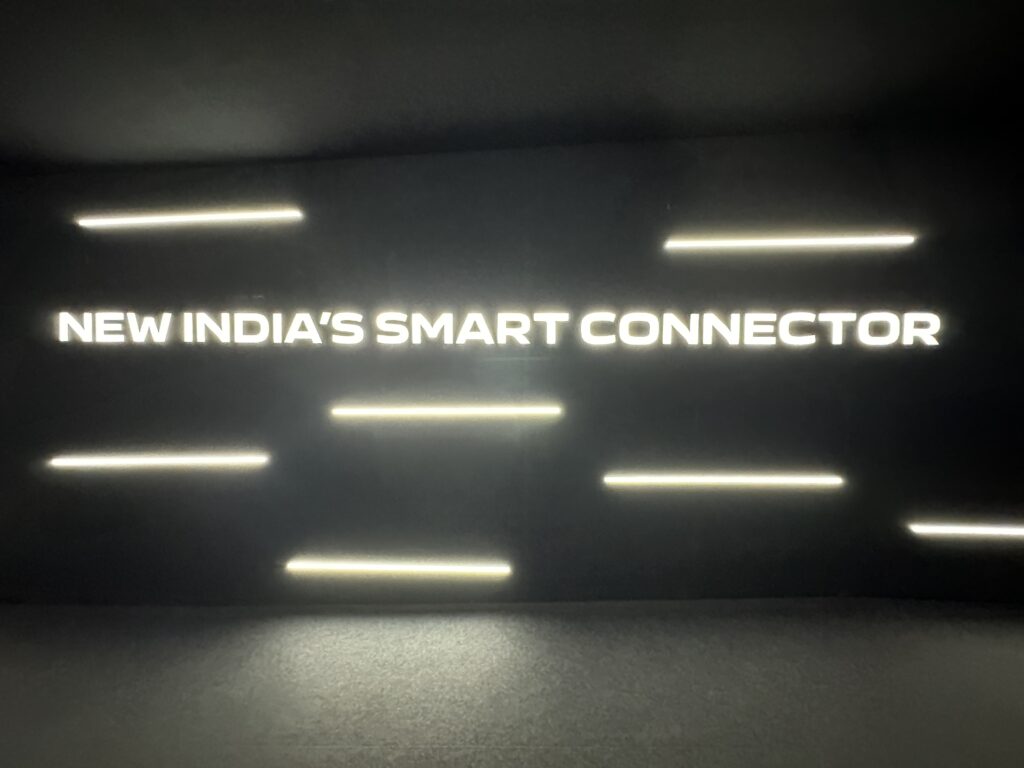
What is an event without an RSVP desk and some lanyards so you scan in your boarding pass (sent on Whatsapp earlier) and print your badge. Off you go to a buzzing pre-event area created specifically for this event. There were photo booths, walls full of the aspirations of Air India Express, and even a picture of JRD Tata, the pioneer who launched civil aviation in India. 

On the outside, an aircraft was waiting, the first Boeing 737-8 for the airline, which was flown in the dark of the night over to Mumbai after its paint job. The team at AIX had put a black drape on it so that it could not be “spotted” before the actual reveal.
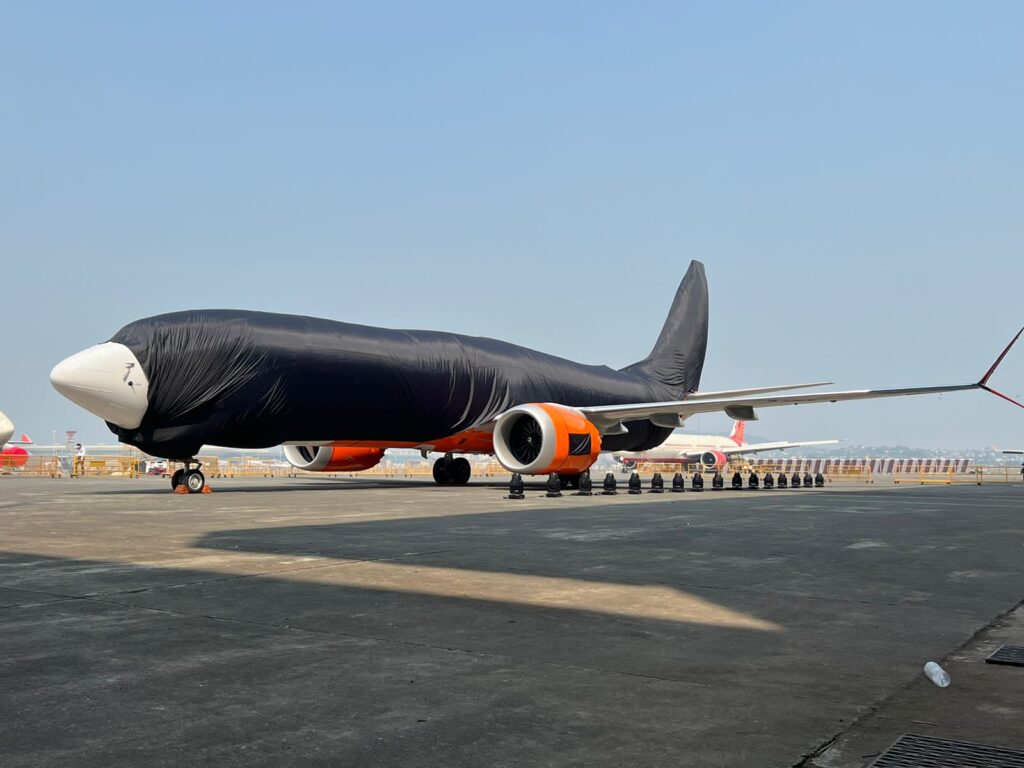
The pre-function area was buzzing with people from the “Air India Group”. Executives from the four Tata Group airlines were all there (Air India, Air India Express/AirAsia India and Vistara), alongside people from other Tata Group entities such as Tata Neu, industry bodies, OEMs and several employees of the two airlines (Air India Express and AirAsia India), who were there as representative of the entire teams across the country.
The doors were opened shortly, and everyone was ushered into their respective zones. It was a massive stage designed inside the erstwhile hangar of Air India (it now belongs to the AI Engineering Services Limited, which has yet to be privatised). In the true spirit of hospitality, a welcome sign was put up in all the official Indian languages.
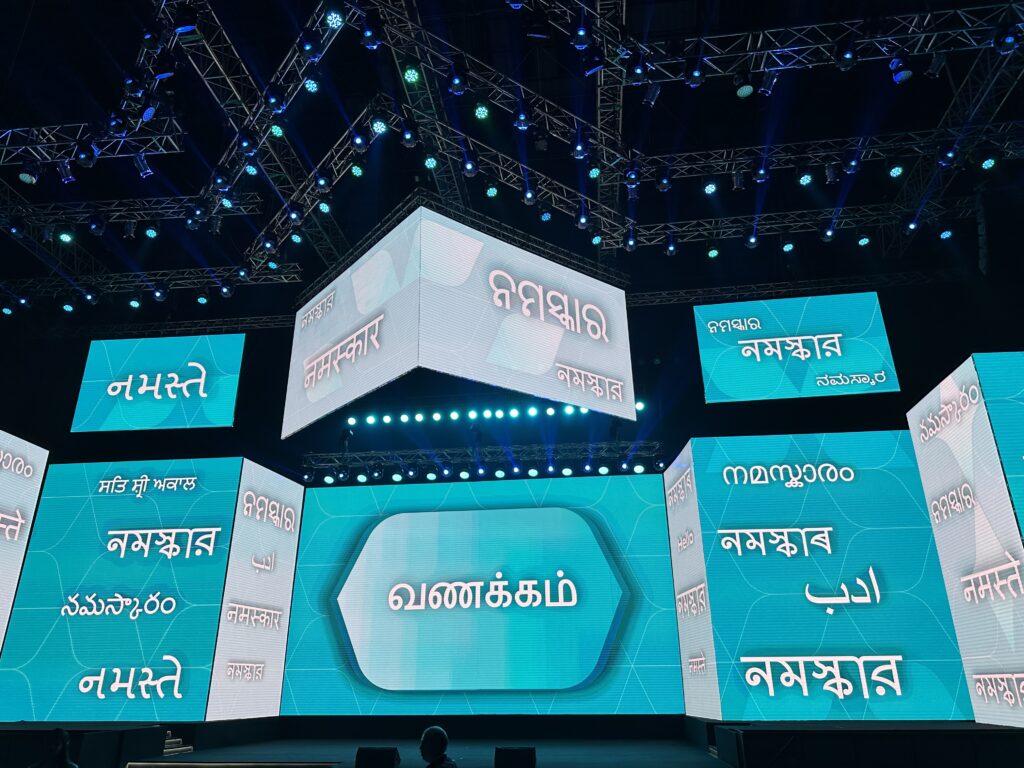
The event was a snappy, 45-minute drill, with no flab anywhere. Siddhartha Bhutalia, the Chief Marketing Officer, was the master of ceremonies. As soon as everyone was settled in, there was a safety demonstration. I almost mistook the teal and khaki combination to be the next uniform iteration for the airline, but I was later told that was not the case.
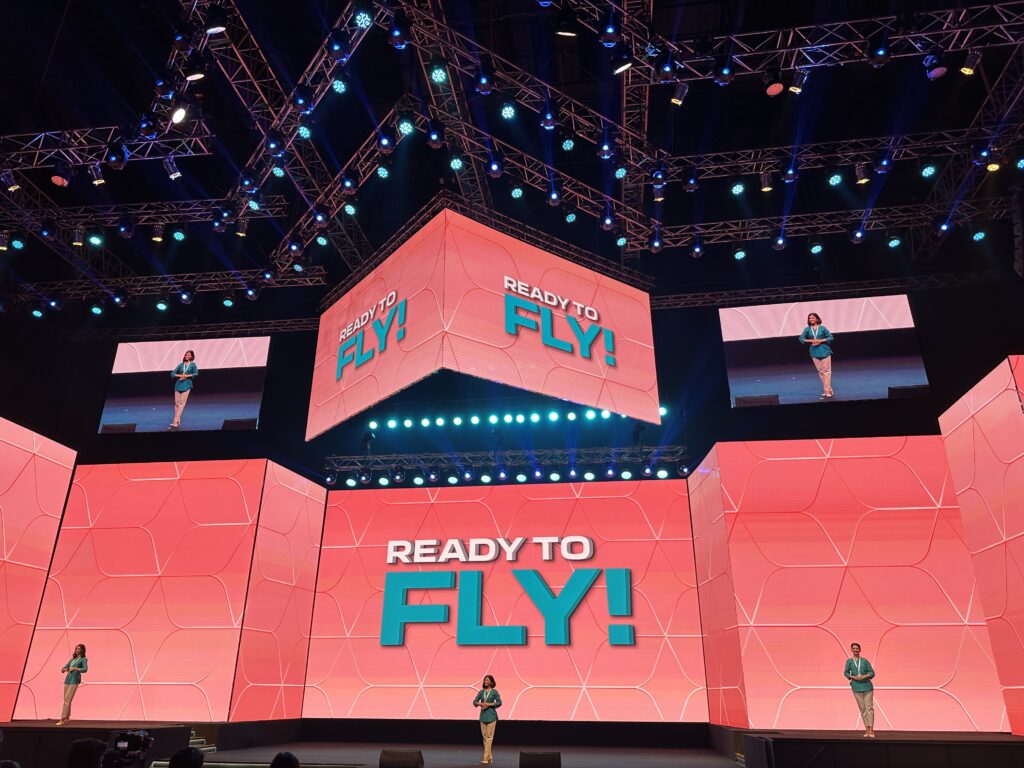
Air India Express’ Chairman of The Board, Campbell Wilson, took to the stage for a short speech. He mentioned the ongoing transformation of the group, but the new piece of information was around how the group will receive one new aircraft every six days on average, and he mentioned that was going to be transformative.
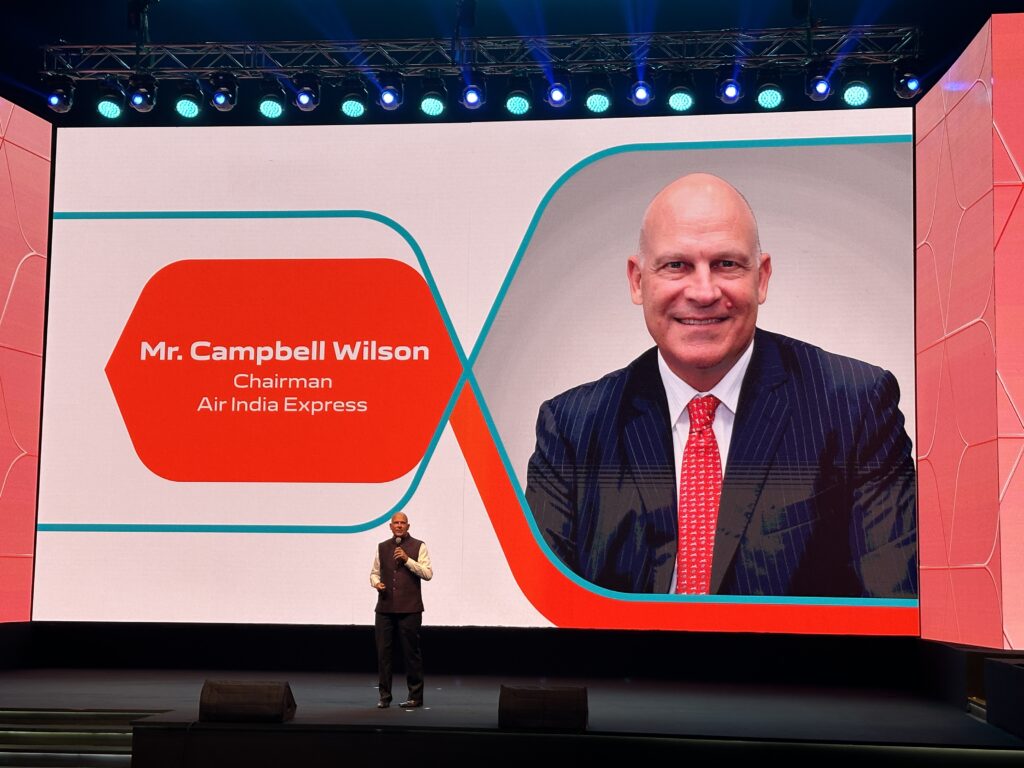
In his words,
With the merger of Air India Express and Air Asia India now in the final stages, we are also seeing the transformation of the aviation landscape. We are proud to present the new brand of Air India Express, a vitally important part of the new Air India Group, charged with providing the best value, accessibility and domestic and regional connectivity to every Indian, and to become the airline of a new generation. The broader ambition of these efforts is to better connect India and Indians, to each other and to the world.
Then, it was time for Aloke Singh to take centre stage. Aloke was the Managing Director of Air India Express and has now taken on the role in the combined entity with AirAsia India.
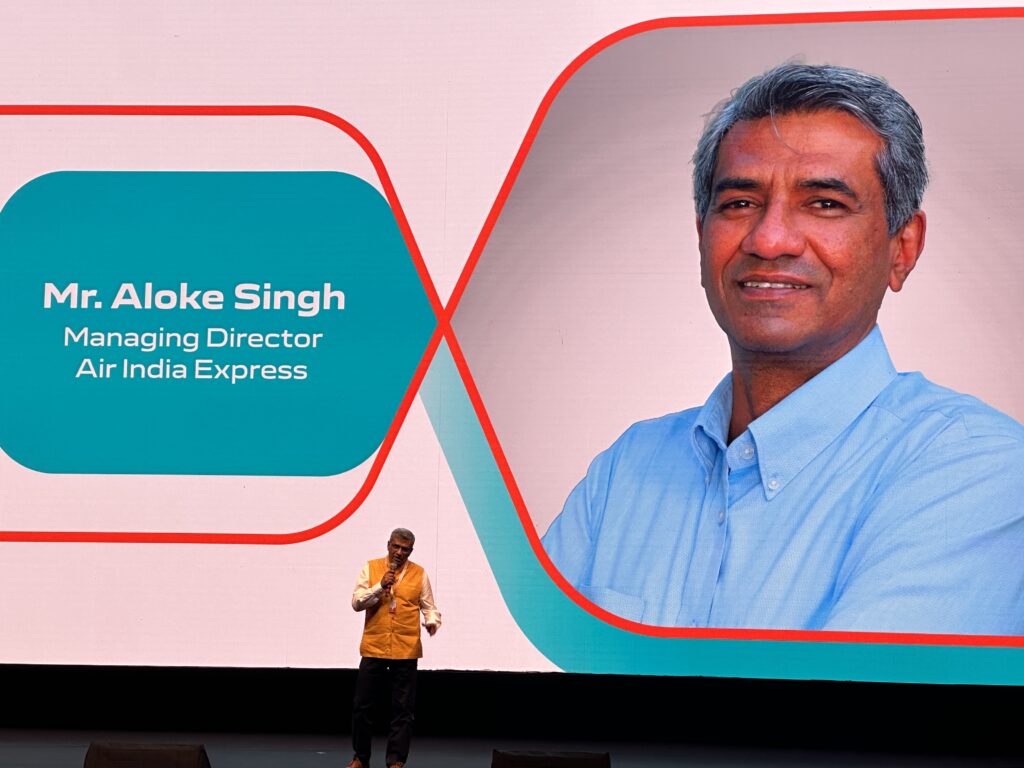
Aloke brought everyone present up to speed with the rapid speed of the integration of the two entities and the rebranding effort and what it signified for the combined entity.
The integrated Air India Express-AirAsia India entity will operate as Air India Express, with a modern, refreshed branding, positioned as ‘New India’s Smart Connector’. The re-branding marks a new phase in our ambitious growth and transformation journey, starting with induction of the modern fuel-efficient Boeing 737 – 8 aircraft. With 50 aircraft set to be inducted into the fleet over the next 15 months, we double in size in a short span of time. Over the course of the next 5 years, we aim to grow to a fleet of about 170 narrow-body aircraft, with a network spanning the domestic India and short-haul international markets. Continuing with our unique tradition, the aircraft livery will feature a variable tailfin design inspired by the rich art and crafts heritage of the country, themed as ‘The patterns of India’
The new role for Air India Express was defined in this post earlier.
The good thing about Air India Express’ reveal was that they were not trying to do everything simultaneously. So when the logo leaked earlier, or even a picture of their livery, they owned it and moved on. They were not trying to cover their tracks too hard. Anyhow, there was a lot more to tell from their side. For instance, their new sonic identity.
The airline had a high-pitch and well-done reveal of their first aircraft in the new livery, which takes from the brand strategy designed for Air India but adapts it to make a unique identity for Express. As you can see, the Jharokha has been extensively used in the form of X. The whole brand identity has been centred around X, which still signifies the cool factor, maybe. Have a look here.
View this post on Instagram
Here is the new Air India Express livery, revealed on VT-BXA, the first of the 190 737 MAX aircraft for Air India Express.
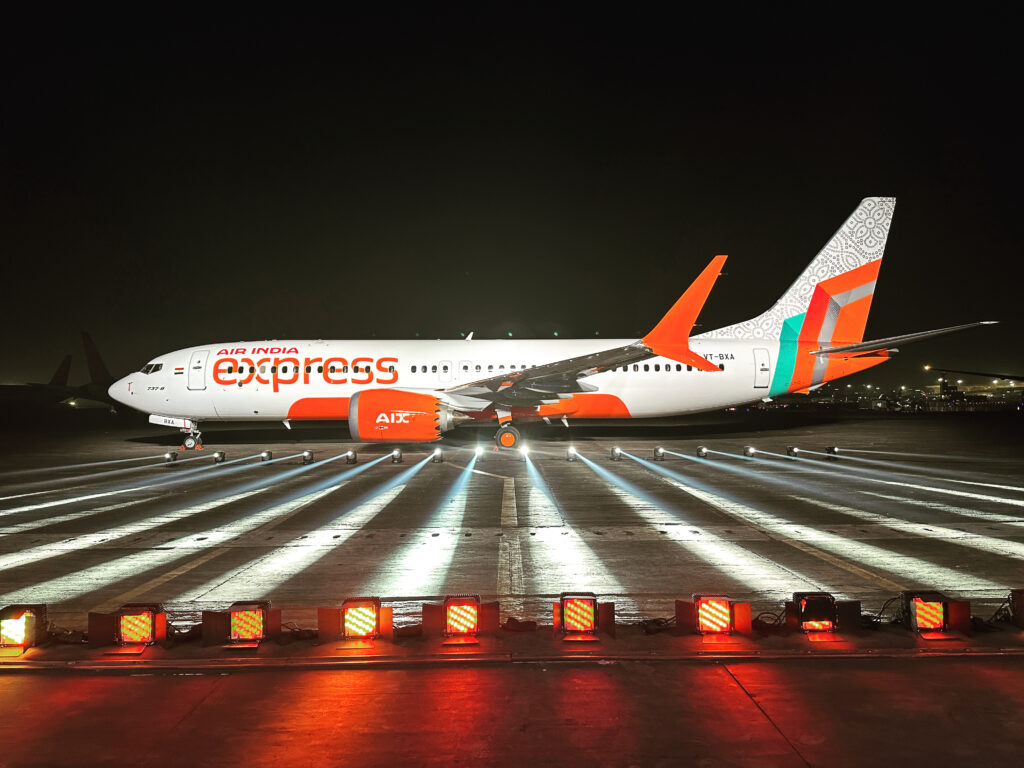
The livery has also been painted on VT-ATD, one of the AirAsia India (now AIX Connect) aircraft. Both aircraft were put into service on October 19, 2023. VT-BXD, the second 737-8 delivered to Air India Express should also be out of the paint shop soon enough.
If you missed out on the event, here is how it went.
And sure enough, the airline had done a comprehensive job of their rebranding announcement because as soon as I stepped into the Mumbai Airport, I saw the changes rolled out at the airport counters, apart from new boarding passes as well for passengers.

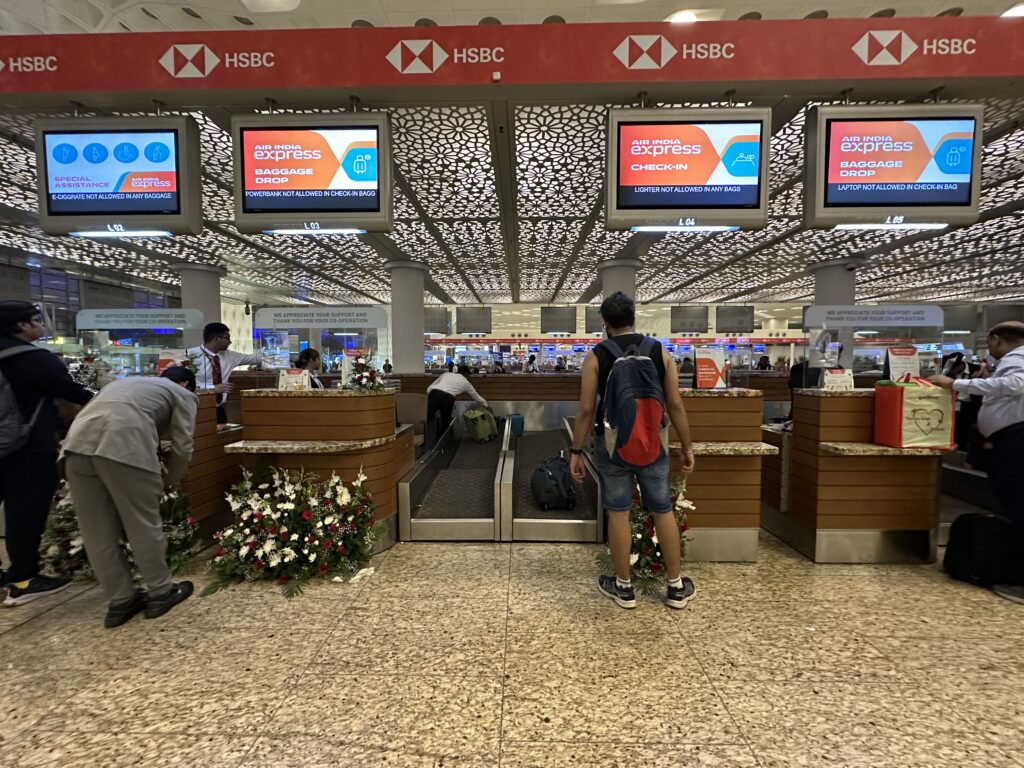
Not only that, as I stepped out of the hangar and walked towards my Uber to take me to the airport, the airline had already released a new version of the app as well (AirAsia India’s app is now Air India Express).
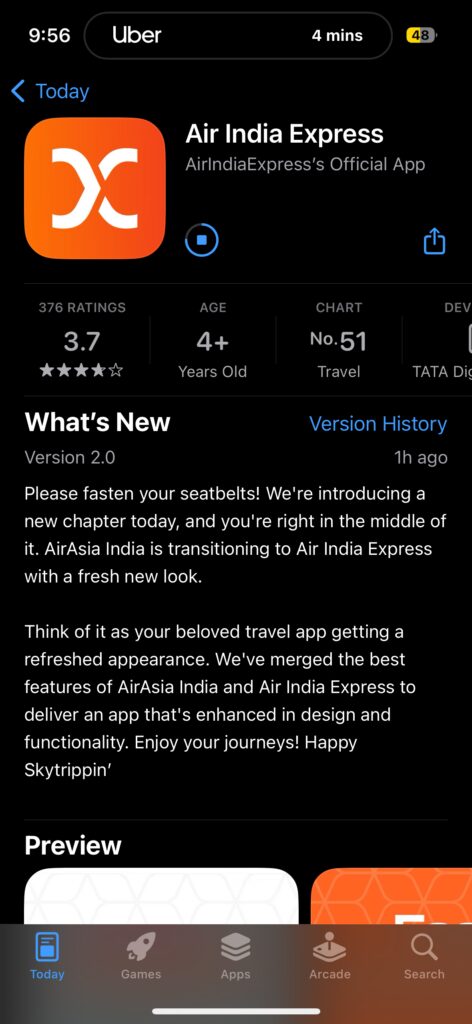
Bottomline
Air India Express rolled out its new brand identity earlier this week, with teams from Air India Express, AirAsia India and the other Tata group airlines, and the employees of both airlines in presence. There has been a good, smart makeover, with the two airlines’ best parts merged into one. In this case, the airline did not wait three months to roll out the new identity; it just did it within the hour.
What do you think of the new Air India Express livery and brand?
Liked our articles and our efforts? Please pay an amount you are comfortable with; an amount you believe is the fair price for the content you have consumed. Please enter an amount in the box below and click on the button to pay; you can use Netbanking, Debit/Credit Cards, UPI, QR codes, or any Wallet to pay. Every contribution helps cover the cost of the content generated for your benefit.
(Important: to receive confirmation and details of your transaction, please enter a valid email address in the pop-up form that will appear after you click the ‘Pay Now’ button. For international transactions, use Paypal to process the transaction.)
We are not putting our articles behind any paywall where you are asked to pay before you read an article. We are asking you to pay after you have read the article if you are satisfied with the quality and our efforts.


Keen to see how they incorporate the tailfin patterns … will it be just above their Orange/Teal windows or will it replace it?
And also, will AIX remain a Buy on-Board 1-class experience or will it move towards a FlyDubai style hybrid with Full Service J/Low-cost Y? Any hints (I would be annoyed to find myself with an international to domestic itinerary going from J to LCC Y.
And my biggest bug-bear of flying into India with a domestic connector is the international to domestic formalities. Any hints as to whether the Air India group will collaborate with Government if India to make it more seamless than it is currently and give a solid reason not to use the ME3 to fly directly to your final destination?
Honestly, it’s good exciting times ahead with Air India and living in the west, it’s amazing to see the blistering speed that they are moving at even if people still have lazy stereotypes (probably sub-conscious bias*) against Air India and Indians.
*i got into an exchange on another forum where someone said they would take SQ premium Economy over AI J on a Europe to Australia return. The mind genuinely boggles!
Hey Dev,
Not sure if AIX previously had any J class seats before (I don’t think they did) but not sure if they would introduce business class onboard..
I mean, why introduce J class onboard AIX when you already have AI ?
And regarding the international to domestic connections issue, on any flight apply globally and is always
based on the first port of arrival where one lands
So if for example someone is flying from FRA-EWR-DEN on a UA flight, they would have to undergo immigration and passport control at EWR, collect their luggage before checking it again through to DEN
Or if one is flying LHR-DEL-AMD, then of course passport control and luggage collection would happen at the first port of arrival, in this case Delhi..
These are government regulations that are implemented globally
This has always been the norm for international to domestic connections for any airlines globally..
Not sure if airlines have much of a say on this topic, because if it is changed, then it would have to be changed globally..
But there must be a reason why such a rule exists in the first place..
The ME3 airlines usually go for international to international connections where you just need to go through passport control at the end of your station..
Not quite sure how they managed it but Delta and Aeromexico have arranged things so that if you’re connecting onward from Mexico City to another destination in Mexico you don’t have to claim your luggage, similar to connecting through an airport in the Schengen area to a Schengen destination. That easily shaves 30-60 minutes off of connection time, and at least creates the possibility of a more seamless immigration/security shortcut experience (though that hasn’t been implemented at MEX and I wouldn’t hold my breath)